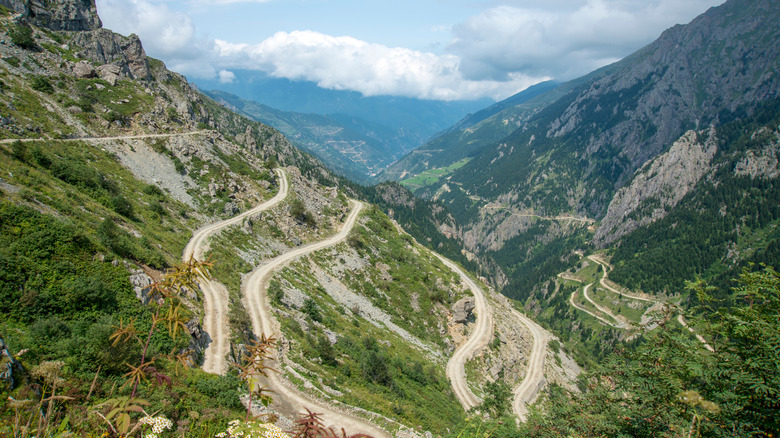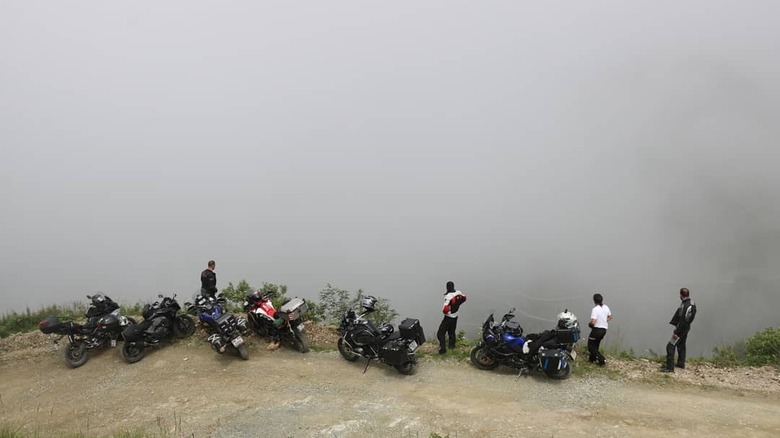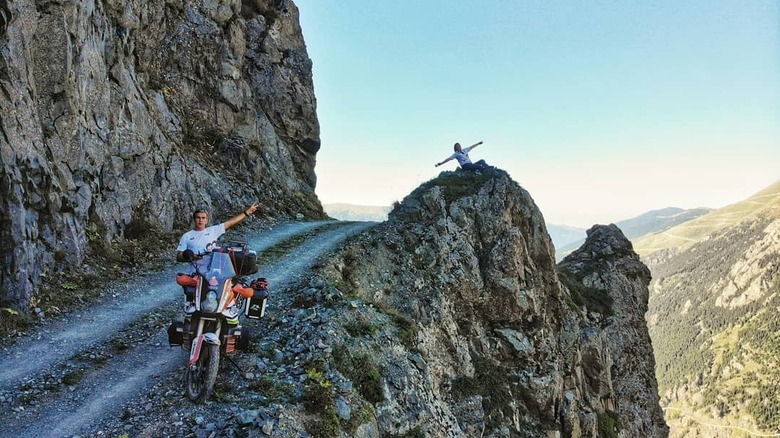One Look At This Asian Road Is Enough To See Why It's One Of The World's Most Dangerous
We all know that road travel has its dangers and safety is an important topic for drivers and pedestrians alike. As of 2023, the World Health Organization (WHO) estimated that around 1.2 million people die in road-related incidents every year; a clock on their website ticks ominously down to the next tragedy, with a road user losing their life every 23 seconds on average. Driving can be dangerous enough even when you have road safety campaigns and all the modern precautions, but then you have some roads around the globe that look as if they were deliberately designed to give the most adventurous motorists the heebie-jeebies. One such route is the Bayburt Of Yolu highway in northeastern Turkey.
Innocuously designated the D915 state road, just a photo of its most treacherous stretch is enough to tell you why some sources regard it as one of the most dangerous roads in the world. One of the most iconic sections of the route is the much-photographed Derebaşı Turns, a vertiginous series of switchbacks crawling their way up the side of Soganli Mountain without a single guardrail for safety. Readers of Dangerousroads.org voted the D915 among the planet's most daunting along with the cute-sounding Fairy Meadows Road in Pakistan and the perennial favorite, Bolivia's "Death Road." If visiting Turkey, here is what you need to know before taking this perilous road trip.
What exactly is the Bayburt of Yolu road?
The Bayburt Of Yolu starts in the city of Bayburt in northeastern Turkey and runs 65 miles through the mountains before reaching Of, a town on the shores of the Black Sea. It was built during World War I after Russian troops seized control of Trabzon in 1916, designed to connect the coastal city with the southern reaches of northeastern Turkey. The Russians forced hundreds of local laborers to do all the hard work, hacking out the route through the mountains with hand tools. It is not clear how many improvements have been made to the road since, but a century later, the D915 is now a staple of "dangerous road" blogs and listicles.
It's a very beautiful and picturesque part of Turkey, although you probably won't want to take your eyes off the road for too long to admire the scenery. If you check it out on Google Maps, you'll note that it seems normal enough until it seems to vanish in the middle section where it traverses the mountainous region between Trabzon and Bayburt districts. While the start and end of the highway are covered with tarmac, this central part (and also the most daunting stretch) is mostly loose gravel and mud, which can be very hazardous if the weather is bad. Consequently, the road is often closed between the end of October and the summer months, depending on snowfall in the region.
Why the Bayburt Of Yolu is dangerous
Thanks to its dangerous reputation, the D915 has become popular with extreme driving enthusiasts and thrill-seeking tourists visiting Turkey, who take their chances along with the trucks and other traffic that ply the route. Driving the highway should only be attempted by experienced motorists and those with a head for heights. The steepest sections are not the place for people suffering from vertigo.
There are 38 hairpin turns along the entire route and, as noted before, there are no guardrails. One lapse in concentration on the most perilous sections could result in doom. The central section is also very narrow, so other traffic can also present a hazard, particularly if you're not familiar with the road. Erosion and rockfalls present other obstacles to negotiate, and weather can hinder visibility, especially in the Derebaşı Turns, which is often shrouded in snow and fog. This stretch is the final ascent through the Sognali mountains, where just over 3 miles of road soar from 5,617 feet to 6,677 feet above sea level.
It's either the highlight or your worst nightmare, depending on how much of a daredevil you are. Here you will encounter 13 infamous switchbacks wending their way up (or down) the mountain, with gradients tilting up to 17% and sheer dropoffs plummeting to almost 1,000 feet. Again, it's not for novices or nervous drivers, but it's a road trip you won't forget in a hurry.


